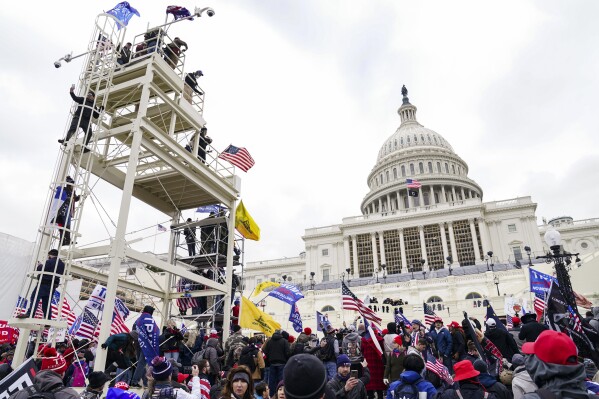After counting more than two million votes cast in the English council elections, a provisional National Share Estimate shows the Conservatives on just 26% of the vote, a 19-point drop compared with the 2019 general election and one of its worst ever performances in any set of local elections.
Labour's vote rises from 33% in 2019 to 35% on the current estimate, after more than half the wards have now declared.
The Liberal Democrats are on 16%, an increase of five percentage points on the 2019 election. This follows a familiar pattern where the party does better in council elections than in parliamentary elections.
Local election results: Relief for Sunak in key mayoral race
Other parties, such as the Greens, Reform, and independents, are projected to be on 22%.
This figure assumes also that votes for the nationalist parties in Scotland and Wales, places where no local elections took place, are unchanged from the previous election. The same condition applies to the 18 seats in Northern Ireland.
Assuming these changes in vote share occur uniformly across each of the newly drawn parliamentary constituencies in place for the next general election, Labour wins 294 seats and would overtake the Conservatives - but falls 32 seats short of gaining an overall majority.
The Conservatives fall from 372 seats on the new boundaries to just 242 seats, a projected loss of 130 seats. The Liberal Democrats rise from eight to 38 seats.
As is usual in such projections, there are individual constituencies where the count of local votes shows a party "winning" a constituency when the uniform swing suggests otherwise.
Two such examples are Aldershot and Plymouth Moor View, both of which fall to Labour when we aggregate local votes in wards lying within those constituencies.
Employing the same procedure, however, Labour's seat tally suffers when local votes in constituencies such as Blackburn and Oldham West were "won" by independents when actual votes are counted.
Labour easily retains these constituencies when uniform swing is considered.
Keep up with all the latest news from the UK and around the world by following Sky News
Tap hereThe large vote for others highlights a growing tendency in local elections for some voters to support a range of smaller parties.
This year that tendency is exaggerated still further with the swing away from Labour towards independents in certain parts of the country.
Disclaimer: The copyright of this article belongs to the original author. Reposting this article is solely for the purpose of information dissemination and does not constitute any investment advice. If there is any infringement, please contact us immediately. We will make corrections or deletions as necessary. Thank you.



